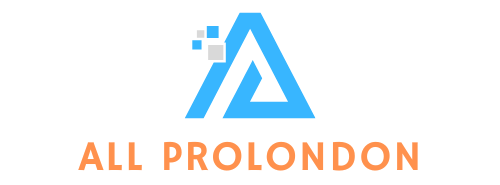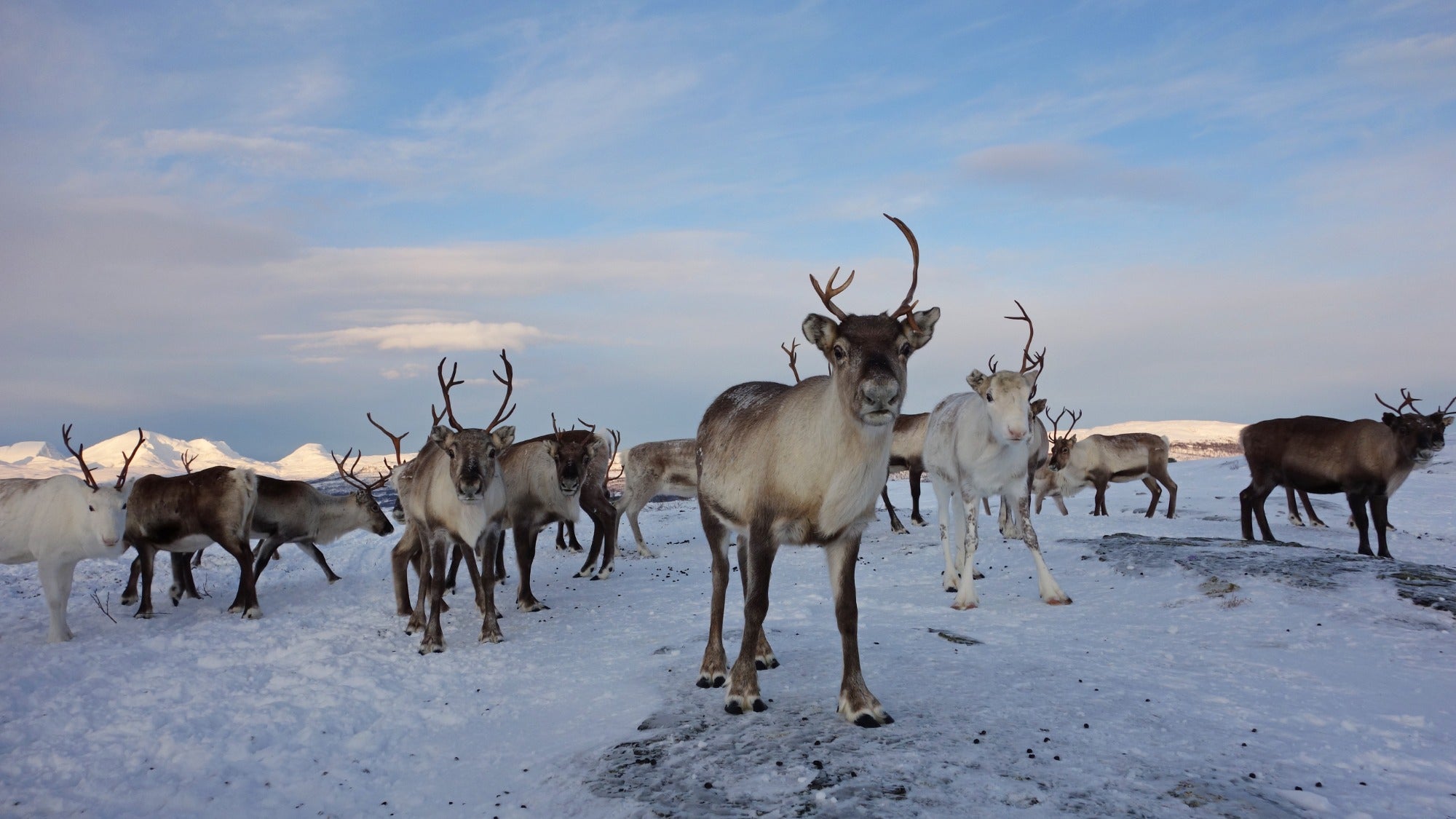
Table of Contents
This text was once at the beginning featured on The Dialog.
Within the Arctic, the liberty to go back and forth, hunt and make daily choices is profoundly tied to chilly and frozen prerequisites for far of the 12 months. Those prerequisites are hastily converting because the Arctic warms.
The Arctic is now seeing extra rainfall when traditionally it might be snowing. Sea ice that after secure coastlines from erosion all over fall storms is forming later. And thinner river and lake ice is making go back and forth via snowmobile more and more life-threatening.
Send visitors within the Arctic could also be expanding, bringing new dangers to fragile ecosystems, and the Greenland ice sheet is continuous to ship freshwater and ice into the sea, elevating world sea stage
In the once a year Arctic File Card, launched Dec. 13, 2022, we introduced in combination 144 different Arctic scientists from 11 nations to inspect the present state of the Arctic machine.
NOAA Local weather.gov
The Arctic is getting wetter and rainier
We discovered that Arctic precipitation is on the upward thrust throughout all seasons, and those seasons are transferring.
A lot of this new precipitation is now falling as rain, occasionally all over iciness and historically frozen instances of the 12 months. This disrupts day by day lifestyles for people, flora and fauna and vegetation.
Roads turn into dangerously icy extra regularly, and communities face larger chance of river flooding occasions. For Indigenous reindeer herding communities, iciness rain can create an impenetrable ice layer that stops their reindeer from having access to plants underneath the snow.
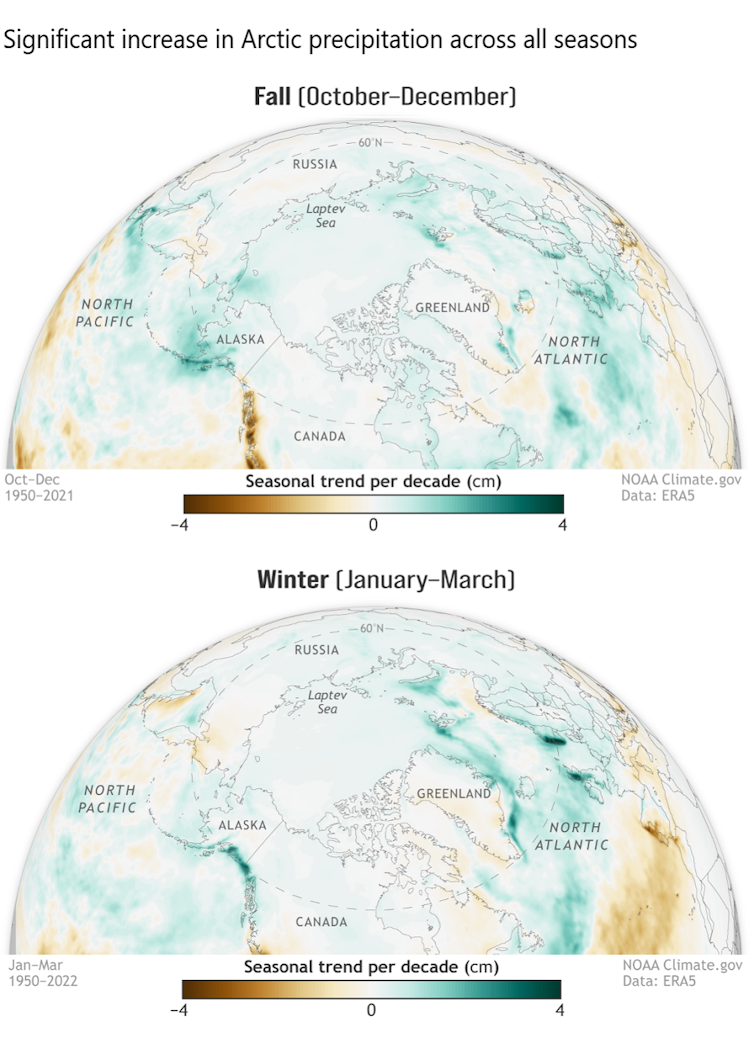
Arctic-wide, this shift towards wetter prerequisites can disrupt the lives of animals and vegetation that experience advanced for dry and chilly prerequisites, probably changing Arctic peoples’ native meals.
When Fairbanks, Alaska, were given 1.4 inches of freezing rain in December 2021, the moisture created an ice layer that continued for months, bringing down timber and disrupting go back and forth, infrastructure and the power of a few Arctic animals to forage for meals. The ensuing ice layer was once in large part chargeable for the deaths of a 3rd of a bison herd in inner Alaska.
There are more than one causes for this build up in Arctic precipitation.
As sea ice hastily declines, extra open water is uncovered, which feeds greater moisture into the ambience. All of the Arctic area has noticed a greater than 40% loss in summer season sea ice extent over the 44-year satellite tv for pc report.
The Arctic environment could also be warming greater than two times as rapid as the remainder of the globe, and this hotter air can grasp extra moisture.
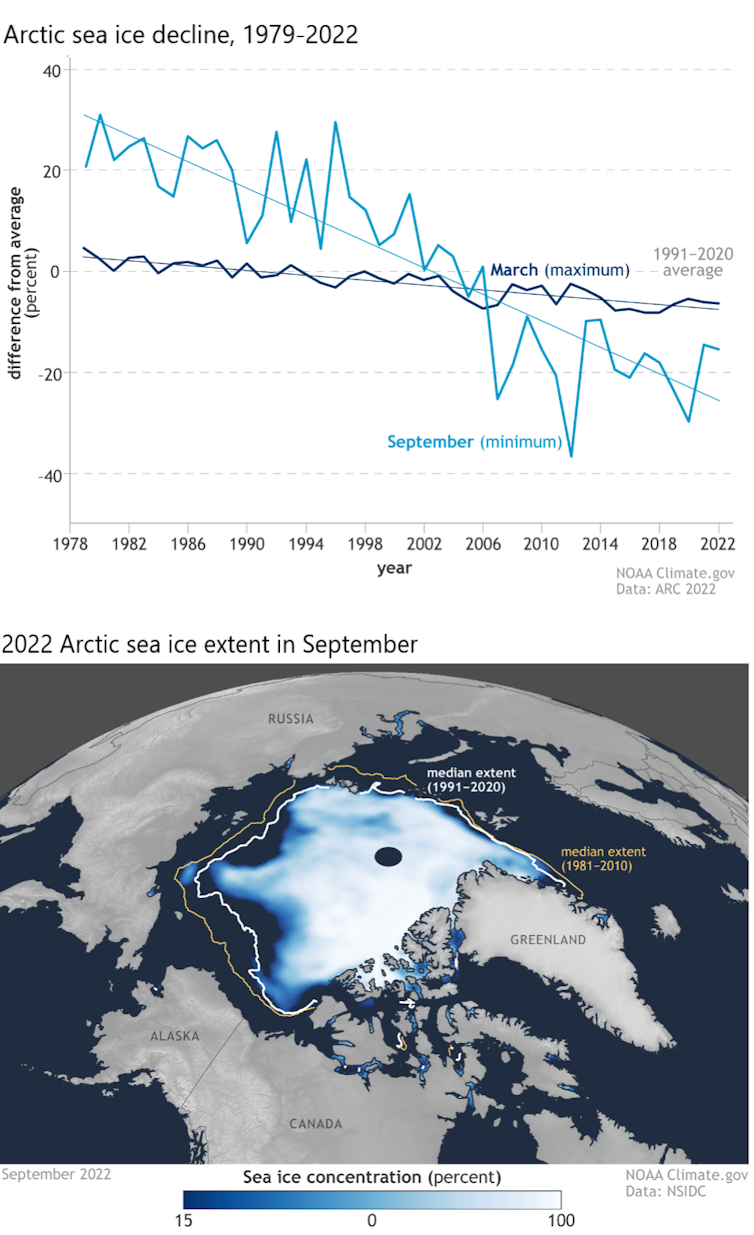
Underneath the bottom, the wetter, rainier Arctic is accelerating the thaw of permafrost, upon which maximum Arctic communities and infrastructure are constructed. The result’s crumbling constructions, sagging and cracked roads, the emergence of sinkholes and the cave in of neighborhood coastlines alongside rivers and ocean.
Wetter climate additionally disrupts the construction of a competent iciness snowpack and protected, dependable river ice, and regularly demanding situations Indigenous communities’ efforts to harvest and protected their meals.
When Storm Merbok hit in September 2022, fueled via strangely heat Pacific water, its hurricane-force winds, 50-foot waves and far-reaching hurricane surge broken properties and infrastructure over 1,000 miles of Bering Sea beach, and disrupted looking and harvesting at a the most important time.

Arctic snow season is shrinking
Snow performs essential roles within the Arctic, and the snow season is shrinking.
Snow assists in keeping the Arctic cool via reflecting incoming sun radiation again to area, somewhat than permitting it to be absorbed via the darker snow-free floor. Its presence is helping lake ice last more into spring and is helping the land to retain moisture longer into summer season, combating overly dry prerequisites which might be ripe for devastating wildfires.
Snow could also be a go back and forth platform for hunters and a habitat for lots of animals that depend on it for nesting and coverage from predators.
A shrinking snow season is disrupting those essential purposes. As an example, the June snow duvet extent around the Arctic is declining at a price of just about 20% in line with decade, marking a dramatic shift in how the snow season is outlined and skilled around the North.
Even within the intensity of iciness, hotter temperatures are breaking via. The a ways northern Alaska the town of Utqiaġvik hit 40 levels Fahrenheit (4.4 C) – 8 F above freezing – on Dec. 5, 2022, even if the solar does no longer breach the horizon from mid-November via mid-January.

Deadly falls via skinny sea, lake and river ice are on the upward thrust throughout Alaska, leading to fast tragedies in addition to including to the cumulative human value of local weather exchange that Arctic Indigenous peoples at the moment are experiencing on a generational scale.
Greenland ice soften approach world issues
The affects of Arctic warming aren’t restricted to the Arctic. In 2022, the Greenland ice sheet misplaced ice for the twenty fifth consecutive 12 months. This provides to emerging seas, which escalates the risk coastal communities world wide will have to plan for to mitigate flooding and hurricane surge.
In early September 2022, the Greenland ice sheet skilled an unparalleled late-season soften match throughout 36% of the ice sheet floor. This was once adopted via some other, even later soften match that very same month, brought on via the remnants of Storm Fiona shifting up alongside japanese North The usa.
Global groups of scientists are devoted to assessing the size to which the Greenland ice sheet’s ice formation and ice loss are out of stability. They’re additionally more and more studying in regards to the transformative position that warming ocean waters play.
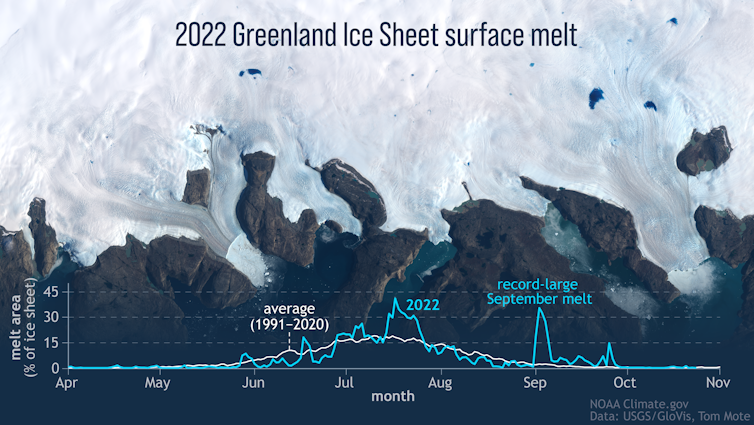
This 12 months’s Arctic File Card comprises findings from the NASA Oceans Melting Greenland (OMG) project that has showed that warming ocean temperatures are expanding ice loss on the edges of the ice sheet.
Human-caused exchange is reshaping the Arctic
We live in a brand new geological age — the Anthropocene — through which human job is the dominant affect on our local weather and environments.
Within the warming Arctic, this calls for decision-makers to higher wait for the interaction between a converting local weather and human job. As an example, satellite-based send information since 2009 obviously display that maritime send visitors has greater inside all Arctic top seas and nationwide unique financial zones because the area has warmed.
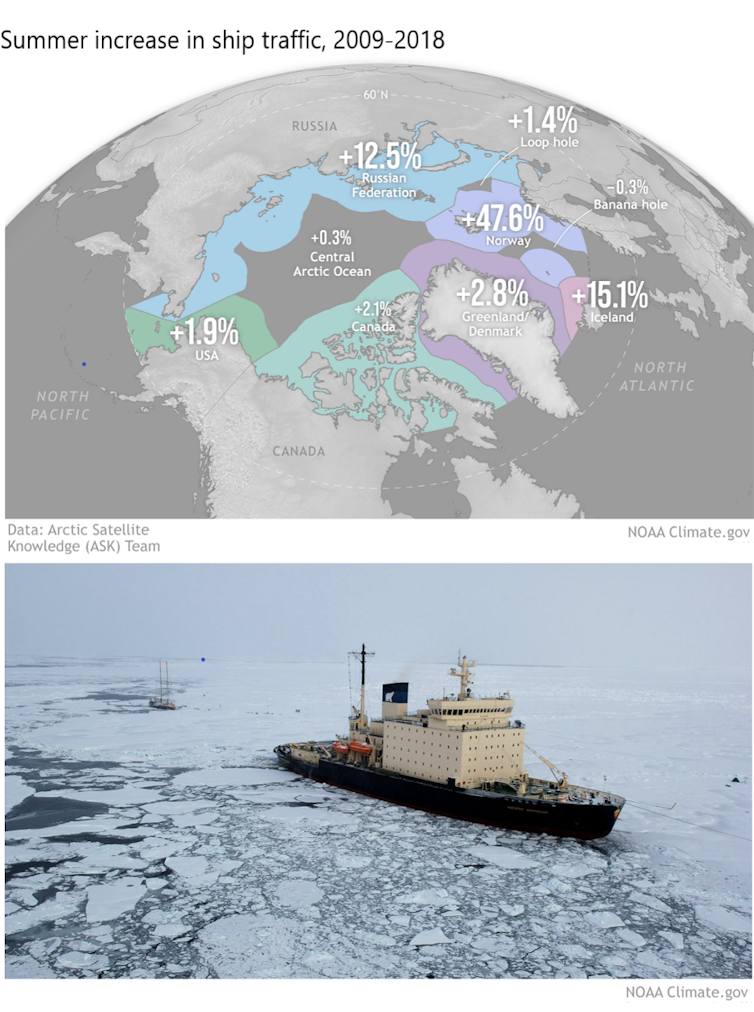
For those ecologically delicate waters, this added send visitors raises pressing considerations starting from the way forward for Arctic industry routes to the advent of much more human-caused stresses on Arctic peoples, ecosystems and the local weather. Those considerations are particularly pronounced given uncertainties in regards to the present geopolitical tensions between Russia and the opposite Arctic states over its warfare in Ukraine.
Speedy Arctic warming calls for new varieties of partnership and data sharing, together with between scientists and Indigenous knowledge-holders. Cooperation and construction resilience can lend a hand to cut back some dangers, however world motion to rein in greenhouse gasoline air pollution is very important for all the planet.
Matthew L. Druckenmiller is a Analysis Scientist on the Nationwide Snow and Ice Knowledge Middle (NSIDC), Cooperative Institute for Analysis in Environmental Sciences (CIRES), College of Colorado Boulder. Rick Thoman is an Alaska Local weather Specialist on the College of Alaska Fairbanks. Twila Moon is a Deputy Lead Scientist on the Nationwide Snow and Ice Knowledge Middle (NSIDC), Cooperative Institute for Analysis in Environmental Sciences (CIRES), College of Colorado Boulder.
Disclosure commentary: Matthew Druckenmiller receives analysis investment from the Nationwide Science Basis (NSF) and the Nationwide Oceanic and Atmospheric Management (NOAA). Rick Thoman receives investment from NOAA/Arctic Program. Twila Moon receives analysis investment from the Nationwide Science Basis (NSF) and the Nationwide Oceanic and Atmospheric Management (NOAA).
